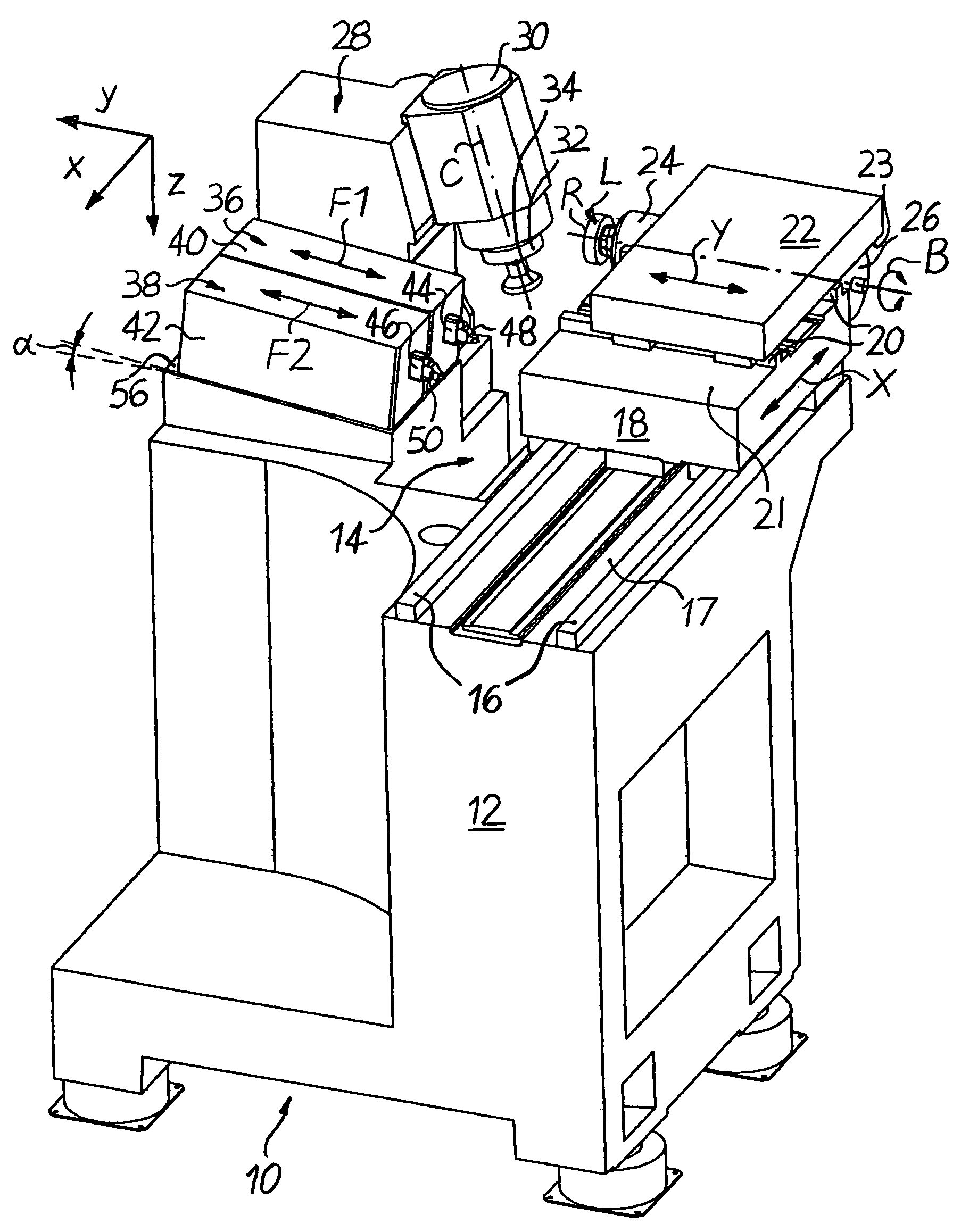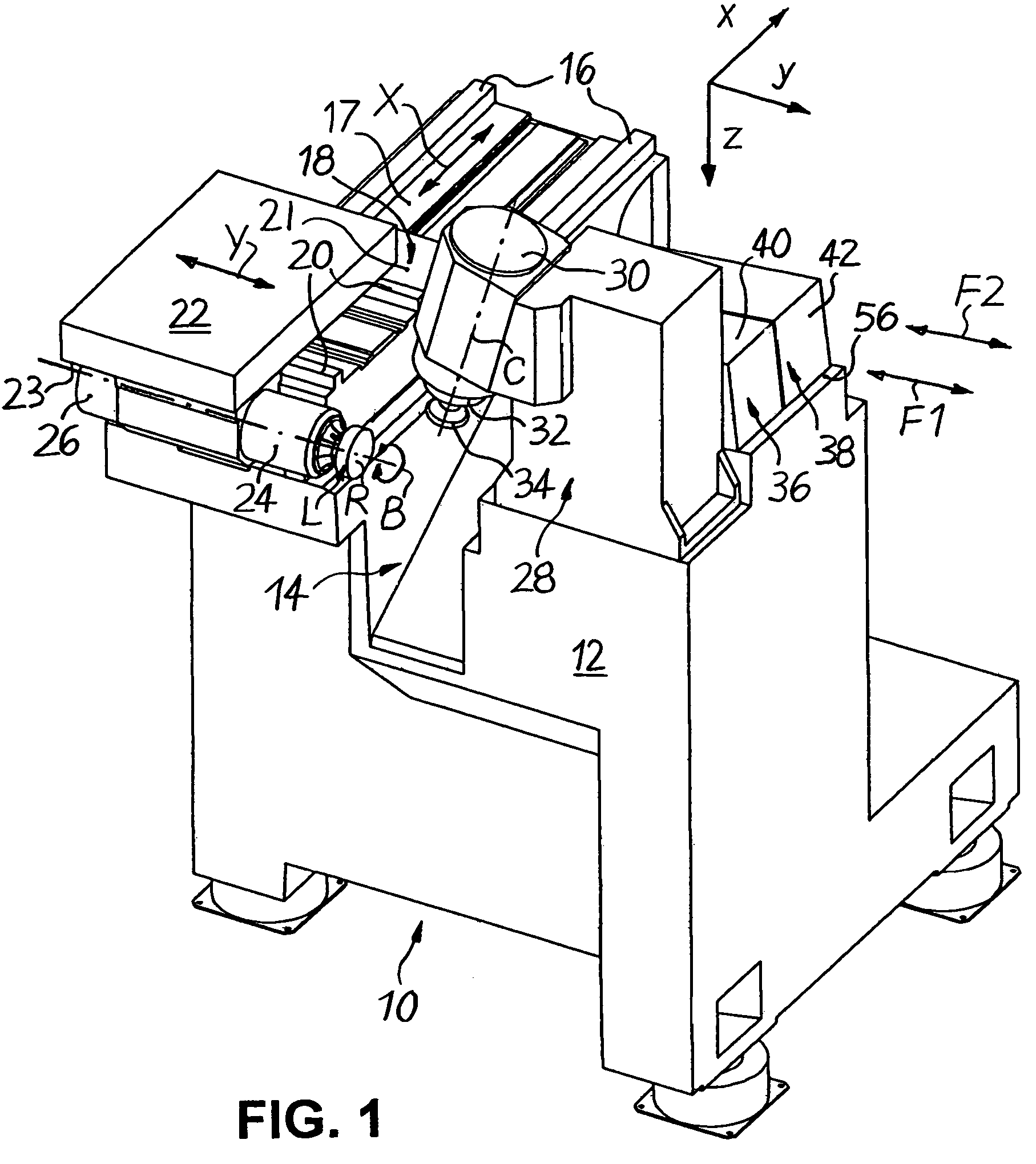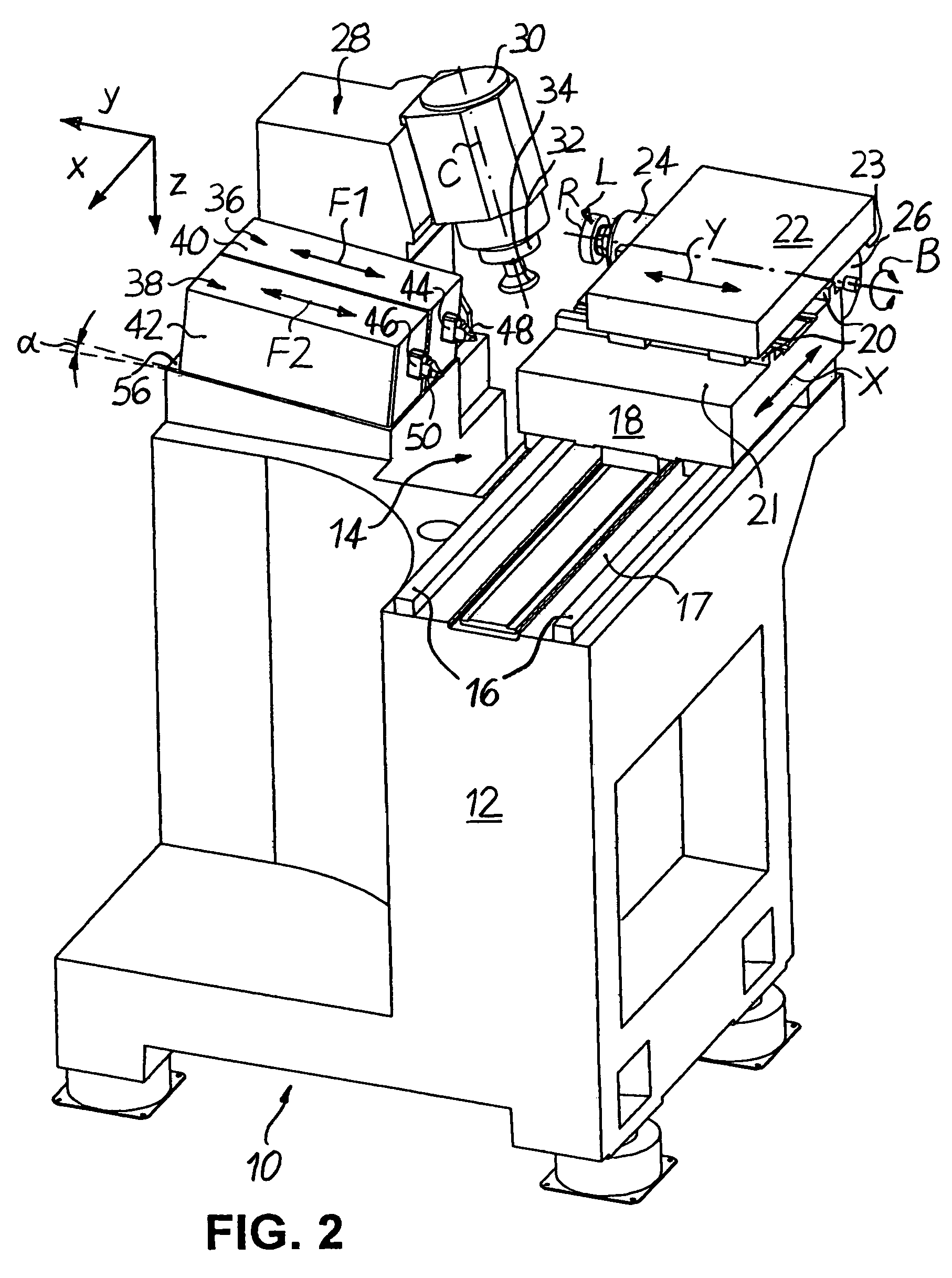Machine for machining optical workpieces, in particular plastic spectacle lenses
a technology for optical workpieces and machine tools, applied in the field of plastic spectacle lenses, can solve the problem of fine height displacement of the cutting edge of the turning tool, and achieve the effects of reducing the mass of weight, high-precision height adjustment of the turning tool, and reducing the weight of the mass
- Summary
- Abstract
- Description
- Claims
- Application Information
AI Technical Summary
Benefits of technology
Problems solved by technology
Method used
Image
Examples
Embodiment Construction
[0022]FIGS. 1 to 5 schematically show a CNC-controlled machine 10 in particular for machining surfaces of spectacle lenses L made of plastic in a right-angled Cartesian co-ordinate system, in which the letters x, y and z denote the width direction (x), the length direction (y) and the height direction (z) of the machine 10.
[0023]As shown in FIGS. 1 to 5, the machine 10 comprises a machine frame 12, which delimits a machining area 14. Fixed to the left-hand side of the machining area 14 in FIG. 1 are two guide rails 16 which extend parallel to one another in the (horizontal) width direction x, on an upper mounting surface 17 of the machine frame 12 in FIG. 1. Displaceably mounted on the guide rails 16 is an X-slide 18, which can be adjusted in a CNC positionally controlled manner in both directions of an X axis by associated CNC drive and control elements (not shown).
[0024]Two further guide rails 20, which extend parallel to one another in the (likewise horizontal) length direction y...
PUM
| Property | Measurement | Unit |
|---|---|---|
| work angle | aaaaa | aaaaa |
| work angle | aaaaa | aaaaa |
| angle | aaaaa | aaaaa |
Abstract
Description
Claims
Application Information
 Login to View More
Login to View More - R&D
- Intellectual Property
- Life Sciences
- Materials
- Tech Scout
- Unparalleled Data Quality
- Higher Quality Content
- 60% Fewer Hallucinations
Browse by: Latest US Patents, China's latest patents, Technical Efficacy Thesaurus, Application Domain, Technology Topic, Popular Technical Reports.
© 2025 PatSnap. All rights reserved.Legal|Privacy policy|Modern Slavery Act Transparency Statement|Sitemap|About US| Contact US: help@patsnap.com



